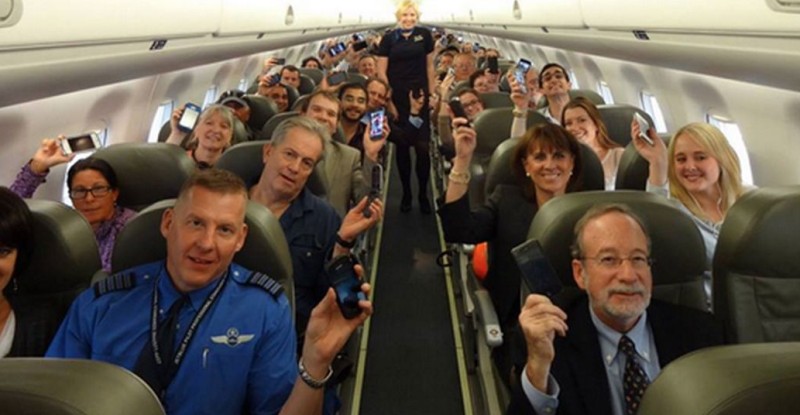It’s official – someone has invented a new way to describe how to make money from inflight connectivity and that someone is none other than JetBlue president Robin Hayes, who is responsible for the New York-based airline’s commercial and operations areas.
During a recent investors call, Hayes revealed that the carrier – gasp – wants to better monetize its ViaSat Exede-powered ‘Fly-Fi’ branded Wi-Fi product after the service comes off beta testing in June.
“We’re still sort of going through a process of upgrading the software to make it a little bit more stable. But as we then move into the second half of the year, our focus moves to the sort of how do we then create sort of a stronger monetization event around Wi-Fi,” said Hayes.
Translation – offering “free” broadband Internet to passengers is great, but someone has to pay for it!
Hayes says he’s thrilled with how the service has performed thus far and is impatient “to get the whole fleet installed so we can start sort of promoting and advertising it and customers can bank on it. What I would tell you, with the exception of one flight that Dave [Barger] took where it didn’t work, we are seeing really, really good customer feedback. In fact, on some of the transcon flying, we’ve had flights with excess of over 100 customers connected simultaneously. And I think there’s no doubt that the product that LiveTV and ViaSat have developed is a game changer in terms of the in-cabin experience.”
At the moment, JetBlue is “focused on the roll out and just ironing out some of the teething bugs”, says the JetBlue executive, later adding, “But I couldn’t be happier and just frustrated that we can’t get the fleet installed more quickly. But we’re rolling out four A320s a week, which isn’t a bad pace.”
ViaSat, meanwhile, recently reported a fiscal fourth quarter net profit of $344 million, though only a tiny portion of that (single digit $mm) is from inflight Internet.
During a conference call with investors, ViaSat confirmed that up to 100 aircraft are now in service with Exede between JetBlue and United; that a 12 Mbps speed per passenger is being achieved well over 90% of the time; and that there are a number of flights with well over 100 active devices on a single airplane. ViaSat – and LiveTV, which holds the STC for the 737 and A320 – are one quarter way through fitting the JetBlue and United fleets combined, and have a goal of 400 installed aircraft by the end of the year.
ViaSat remains incredibly bullish about its opportunities in the inflight connectivity space, in light of the high-capacity nature of Exede. “I think from our perspective, if you look at what we’re doing today with our in-flight Wi-Fi services, where we feel like from a bandwidth perspective, we’ve got an order of magnitude in some cases, substantially more than that advantage compared to pretty much any other technology. And we think that’s why we are seeing the uptick with passenger engagement rates, we are able to deliver the speeds that we are, I think it’s being noticed. And I think that’s going to be really hard to do with air to ground from what we – ground to air, sorry ground to air, obviously how that plays out,” says CEO Mark Dankberg.
He says ViaSat would be surprised “to see somebody come up with higher speeds, more passenger usage, better streaming video than the thing that we’ve been able to demonstrate on 100 aircraft already and we’ll have hundreds more in service this year then it’s going to get only better or in ViaSat-2 that was up the next year”. ViaSat-2 will support Ka-band connectivity over the Atlantic.










